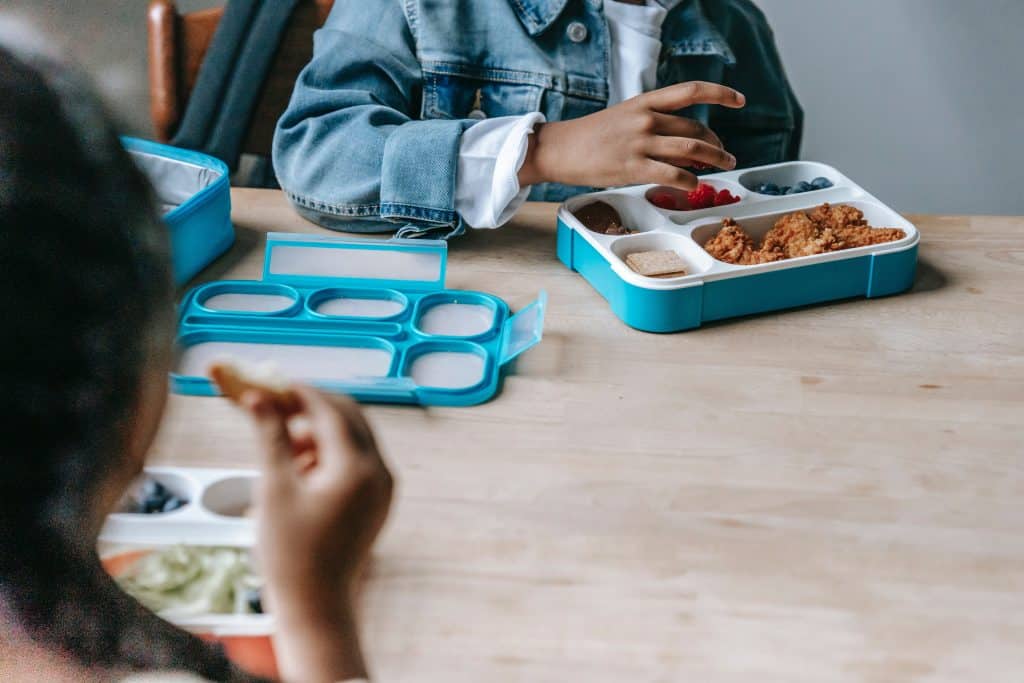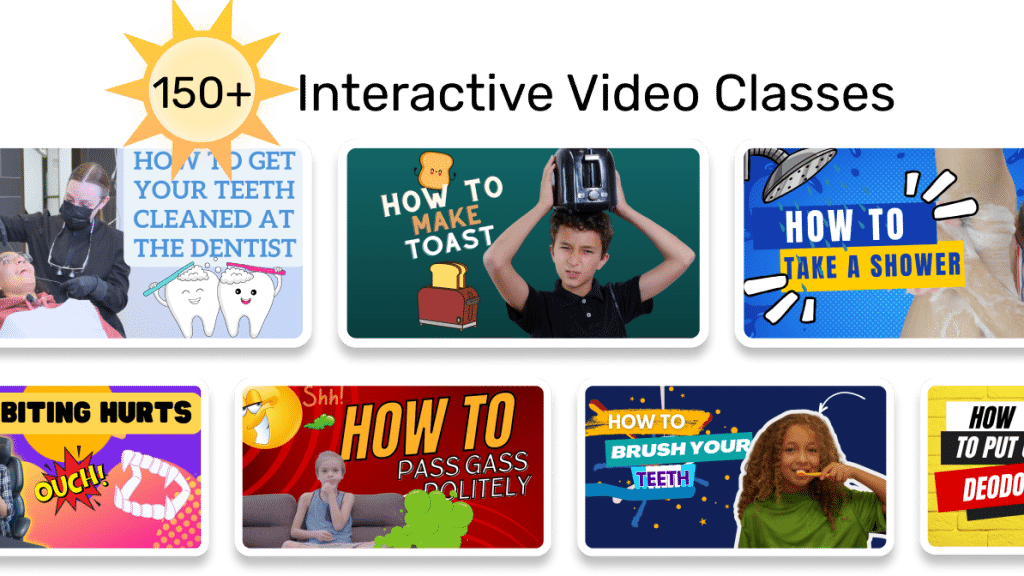It’s that time of year again! Summer is winding down, and school is right around the corner. Getting ready for school can feel like a marathon, especially for parents of neurodivergent kids. But with a solid plan, you can turn the back-to-school hustle into a smooth, stress-free routine. This guide will walk you through the essential steps to help your child get ready for school — from organizing supplies to setting a sleep schedule, we’ve got it covered. This blog post will break down the process into manageable steps, and our Goal Mine video class will model these steps for your kids, helping them master this essential life skill.
Table of Contents
Step 1: Create a School Supply Checklist
The first step in getting ready for school is making sure you have all the supplies your child will need. Grab a notebook or open a new note on your phone and start listing out the basics: pencils, notebooks, folders, and so on. But don’t forget the extras — the items that help your neurodivergent child feel more comfortable and prepared in class.
- Writing Tools: Pencils, pens, and highlighters.
- Organizational Supplies: Folders, binders, and planners.
- Sensory Items: Fidget toys, noise-canceling headphones, or comfort items.
- Backpack: A sturdy backpack with compartments for easy organization.
Once your list is complete, take your child shopping. This is a great way to get them excited about school and give them some control over the process.

Read more: Backpack Organization Tips for a Child With ADHD
Step 2: Establish a Sleep Routine
Getting enough sleep is crucial for kids to be alert and ready to learn. About two weeks before school starts, begin adjusting your child’s sleep schedule. Gradually move bedtime earlier by 10-15 minutes each night until they’re getting the recommended amount of sleep for their age.
Here’s a quick guide to how much sleep kids typically need:
| Age | Hours of Sleep Needed |
|---|---|
| 2-5 years | 10-13 hours |
| 6-12 years | 9-12 hours |
Consistency is key, so keep the routine the same every night. Wind down with a calming activity like reading or listening to soft music. This not only helps your child fall asleep faster but also makes the transition to school mornings easier.
Step 3: Organize a Morning Routine
Mornings can be hectic, but with a well-structured routine, you can keep things running smoothly. Start by setting a wake-up time that allows enough margin for your child to get ready without feeling rushed.
Consider breaking down the morning routine into manageable chunks:
- Wake Up: Allow some time for your child to fully wake up. A gentle alarm or natural light can help.
- Breakfast: Provide a nutritious breakfast that includes protein, whole grains, and fruits or vegetables.
- Getting Dressed: Lay out clothes the night before to make mornings easier.
- Brush Teeth and Hair: Make this a consistent part of the routine to encourage independence.
- Pack Lunch: Involve your child in packing their lunch so they know what to expect during the day.
- Double-Check Backpack: Make sure all supplies and any necessary items for the day are packed and ready to go.
A visual schedule can be particularly helpful for neurodivergent kids. Use images or icons to represent each step, so they can follow along and know what to expect next.
Step 4: Visit the School Ahead of Time
For many kids, especially those with special needs, visiting the school before the first day can reduce anxiety and make the transition smoother. Reach out to the school to schedule a tour, meet the teacher, and explore the classroom.
During the visit, you might want to:
- Walk Through the Routine: Show your child where they’ll enter the school, where their classroom is, and any other important locations like the bathroom or cafeteria.
- Meet the Teacher: A friendly face on the first day can make all the difference.
- Practice the Bus Route: If your child will be taking the bus, practice the route or drive them to school so they know what to expect.
These small steps can help ease back-to-school jitters and build your child’s confidence.

Read more: The Complete Back to School Checklist
Step 5: Prepare for the First Week
The first week of school sets the tone for the rest of the year. Make sure both you and your child are prepared for a successful start. Double-check that all school supplies are labeled and ready to go, and ensure your child knows their schedule.
Here’s what to do during the first week:
- Establish Communication: Stay in touch with your child’s teacher to get updates on how they’re adjusting.
- Debrief Each Day: Talk with your child about their day to identify any concerns or areas where they may need extra support.
- Stay Consistent: Keep the routines you’ve established. Consistency will help your child feel secure and confident.
Remember, the first week is an adjustment period for everyone. Be patient and flexible as your child settles into the new school year.
Goally | 100+ Streaming Video Classes
Does your child need some extra guidance on building essential life skills? Goally’s skill building tablet for kids includes a TV app that has the most robust video library of skills training videos for kids. Ranging from content like “How to Brush Your Teeth” to “How to Make Friends at School,” we have dozens of interactive video lessons for kids with thinking and learning differences.

HERE’s a video explaining how to works.
Getting ready for school doesn’t have to be a stressful experience. By following these steps — from creating a supply checklist to establishing routines and visiting the school ahead of time — you can help your child start the school year with confidence and ease. Remember, preparation is key, and with a little planning, you can ensure a smooth transition back to school.
Resources:
FAQs About How to Get Your Child Read for School
How can Goally help my child get ready for school?
Goally assists kids in getting ready for school by breaking down morning routines into easy-to-follow steps through video classes.
What skills can my child learn with Goally for school preparation?
Goally helps kids master tasks like dressing, brushing teeth, and packing bags, fostering independence and confidence.
How does Goally use task analysis to teach morning routines?
Goally employs task analysis to create step-by-step instructions, making it simple for children to follow each routine task independently.
Is Goally suitable for kids with special needs when preparing for school?
Yes, Goally is designed to cater to the unique needs of children with special requirements, enhancing their readiness for school.
Can Goally be customized to match my child's specific morning routine?
Absolutely! Goally allows you to personalize routines to suit your child's individual needs and adapt to their evolving skillset.
This post was originally published on 10/19/2023. It was updated on 08/16/2024.

Hennah is an experienced writer and researcher, helping children with autism, ADHD, and other neurodivergent conditions. As a blog contributor for Goally, she combines her deep understanding of neurodiversity with practical advice, offering valuable insights to parents and educators.





